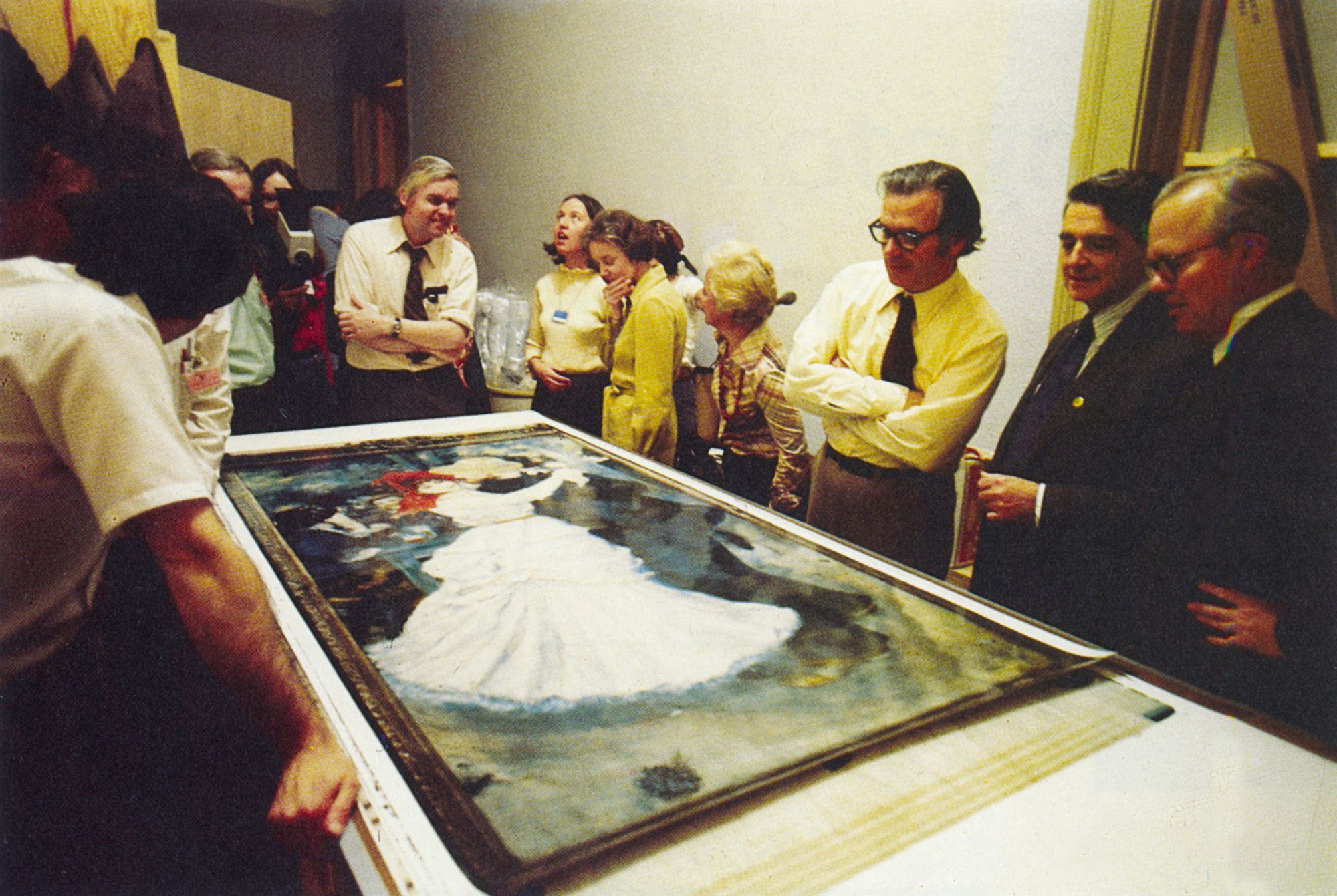Instant Masterpiece
Raphael’s Transfiguration, transfigured by Polaroid
Dennis Jelonnek

“Instant photography sits in a vastly interesting position at the intersection of art and science.”[1] This observation by Edwin H. Land, inventor of the one-step photographic process and founder of the Polaroid Corporation, appeared in a 1979 issue of Close-Up, the quarterly magazine the company published in the 1970s and 1980s. Land was writing about an exhibition that was prepared and presented at the Vatican by a group of the company’s specialists in the same year and which was slated to begin a tour of museums and galleries in the United States. The show itself, however, might just as well have been perceived as a nifty work of postmodern pastiche,[2] for it presented the public with a 95 percent scale reproduction of Raphael’s 159-inch-by-109-inch Transfiguration, made up of four horizontal peel-apart Polaroid photographs. As a nearly seamless whole, the composite of these sixty-second photos was, like the original painting, exhibited in a sixteenth-century gilded frame, which added a touch of pastiche’s “blank parody” to the object.[3] Moreover, when first shown at the Vatican Museums, the framed double had been put on an altar-like support against the backdrop of heavy draperies, simulating the painting’s original purpose as an altarpiece. The exhibition’s allusion to a church setting was reinforced by a succession of moveable walls bearing thirty large-format magnifications of details from Raphael’s painting set in dark wooden frames, thus evoking the aisle of a nave flanked by subordinated side niches. The staging culminated in the elevated—and dramatically heightened—presentation of “The Big One” as an “Instant Masterpiece.”[4]
“These pictures have no autonomous power of signification …; they are provided with signification by the manner in which they are presented.” Douglas Crimp’s exemplary description, also written in 1979, of the “postmodern” character of Sherrie Levine’s photographic work applies equally well to Polaroid’s project, which also deliberately used “processes of quotation, excerption, framing, and staging” to present the company’s achievements at the Vatican Museums, albeit for non-artistic, promotional purposes.[5] This was in fact the third and final such campaign that Polaroid had conducted in museums since 1973, when their revolutionary SX-70 integral picture system had first been marketed. It had had rather disappointing sales figures, and as profits continued to decline during the 1970s, these reproduction campaigns—which operated alongside the company’s policy of collecting, and frequently exhibiting, contemporary artists’ Polaroids[6]—increased in complexity and rhetorical sophistication.